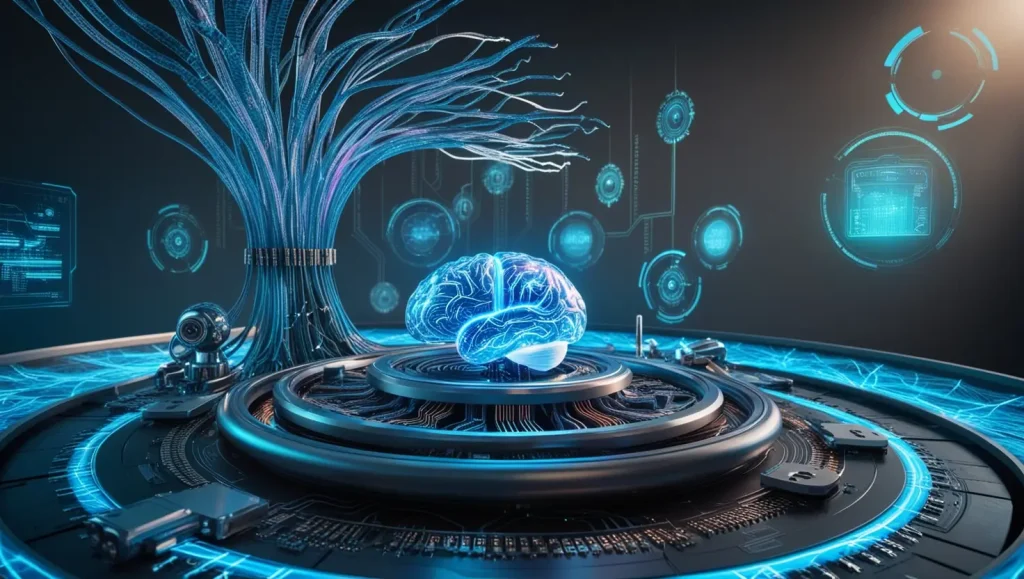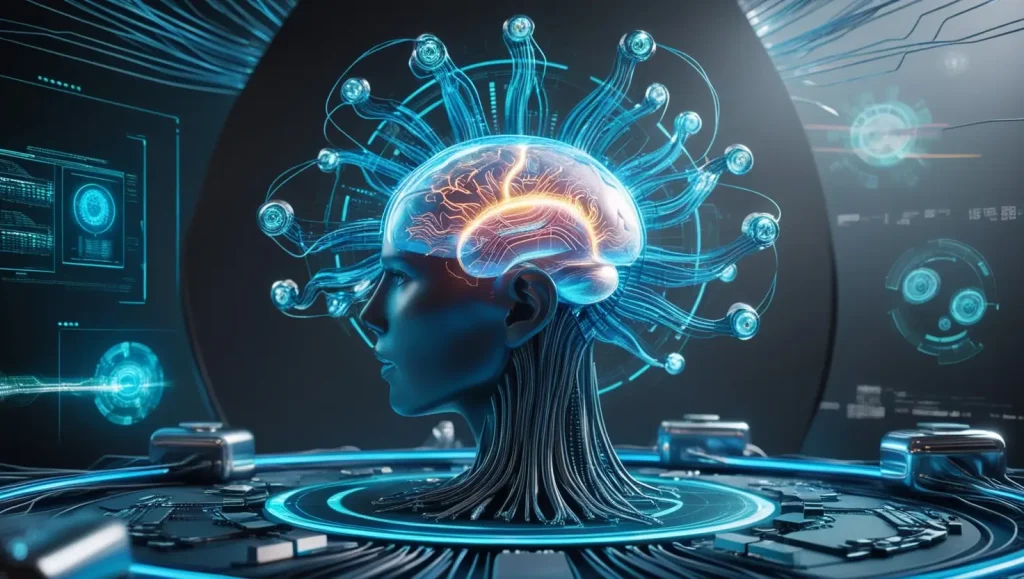Artificial Intelligence (AI) has become a cornerstone of technological innovation, evolving rapidly to solve complex problems across industries. This raises a fascinating and transformative question: Can AI Build AI? As we delve into this concept, we explore the potential, challenges, and implications of AI systems autonomously creating and optimizing other AI models, shaping the future of technology in unprecedented ways.
Can AI Build AI? Understanding AI as a Creator of AI

The concept of AI building AI is not entirely new. It hinges on the idea of machine learning models evolving into creators rather than mere tools. Through methods such as Neural Architecture Search (NAS), AI systems can design and optimize other AI models, potentially leading to breakthroughs that exceed human ingenuity.
What is Neural Architecture Search (NAS)?
NAS is a process where AI autonomously searches for optimal neural network architectures. It involves:
- Search Space Definition: Defining the parameters and structures AI can explore.
- Search Strategy: Employing algorithms such as reinforcement learning or evolutionary strategies.
- Performance Evaluation: Testing the efficiency and accuracy of the generated models.
By automating these processes, NAS reduces the need for human intervention, enabling faster innovation cycles.
Applications of AI Building AI
Automated Machine Learning (AutoML)
AutoML democratizes AI development by automating tasks such as:
- Feature Engineering: Selecting and transforming input data for better model performance.
- Hyperparameter Optimization: Adjusting parameters to maximize accuracy.
- Model Selection: Identifying the best algorithm for a specific task.
Evolving AI for Specialized Domains
AI systems built by other AI excel in creating specialized solutions, such as:
- Healthcare: Designing diagnostic tools for diseases.
- Finance: Building predictive models for market trends.
- Robotics: Developing autonomous navigation algorithms.
These advancements demonstrate the versatility of AI-designed AI systems in solving complex problems.
Benefits of AI Building AI
Speed and Efficiency
Human-led AI development is time-intensive and resource-heavy. AI can accelerate this process by:
- Iterating through designs faster than humans.
- Testing countless configurations simultaneously.
Reduction in Human Bias
Humans often inadvertently introduce biases into AI models. AI-created systems can minimize these biases by relying on data-driven decisions rather than subjective assumptions.
Cost-Effectiveness
AI can significantly lower development costs by:
- Reducing the need for large teams of data scientists.
- Automating repetitive tasks in the development process.
Challenges in AI Creating AI
Despite its potential, the concept faces hurdles:
Complexity of Oversight
AI-generated models often operate as “black boxes,” making it difficult to understand their decision-making processes. Ensuring reliability and ethical compliance requires advanced monitoring systems.
Resource Requirements
Training AI to create other AI demands substantial computational power, which can be cost-prohibitive.
Ethical Considerations
The autonomy of AI systems raises questions about accountability, transparency, and the potential misuse of such technologies.
The Role of Human Expertise
While AI can automate many processes, human oversight remains crucial. Experts ensure that:
- Ethical Guidelines: Systems comply with regulations.
- Quality Assurance: Models meet performance standards.
- Risk Mitigation: Potential risks are identified and addressed.
Human-AI collaboration represents the ideal balance for future development.
Future Implications of AI Building AI
Exponential Innovation
AI-created AI systems could lead to unprecedented advancements across industries, unlocking solutions to problems we have yet to imagine.
Job Market Transformation
As AI takes over complex tasks, it will redefine the roles of data scientists and engineers, shifting the focus from model creation to strategic problem-solving and oversight.
Ethical and Societal Impact
The increasing autonomy of AI necessitates robust frameworks to govern its use, ensuring it benefits society while minimizing potential harm.
Conclusion
The concept of “Can AI Build AI?” encapsulates the next frontier in technological advancement. While the journey is filled with challenges such as oversight and ethical considerations, the potential for exponential innovation and efficiency cannot be ignored. As we navigate this transformative era, balancing the opportunities and responsibilities of AI-driven development will shape our collective future.


